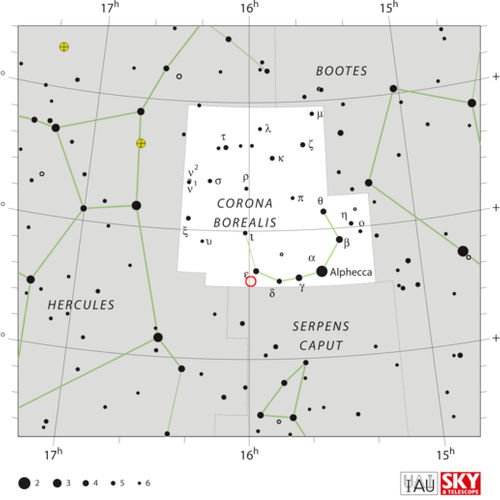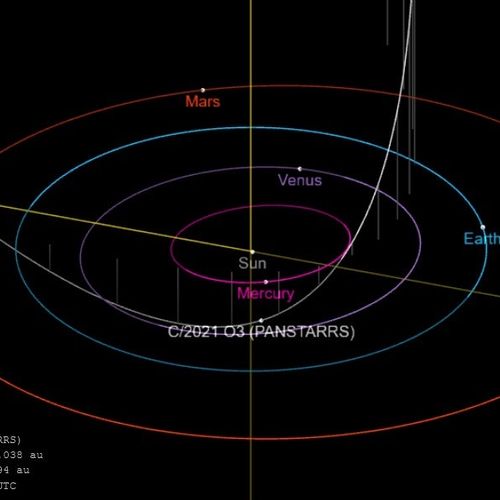
| Added | Sun, 17/07/2022 |
| Источники | |
| Дата публикации | Sun, 17/07/2022
|
| Версии |
A new radio signal from deep space once again challenges our understanding of these mysterious phenomena.
This new fast radio burst, called FRB 20191221A, is not only another extremely rare repetitive signal, but not even that fast: the duration of radio bursts received in intergalactic space is three seconds, which is about 1000 times longer than the average.
However, bursts of higher intensity radiation occur every 0.2 seconds during this three-second time interval - which has never been observed in fast radio bursts before.
The CHIME detector detected this pulse in December 2019, and scientists immediately realized that they had encountered something very unusual.
"It was unusual," said astrophysicist Daniele Micilli of the Kavli Institute of Astrophysics and Space Research at the Massachusetts Institute of Technology. "Not only was it very long, lasting about three seconds, but it also had periodic peaks that were surprisingly accurate, radiating every fraction of a second-boom, boom, boom-like a heartbeat." This is the first time when the signal itself is periodic."
Fast radio bursts are one of the most fascinating modern space mysteries. They are extremely powerful bursts of radiation in the radio wavelength range that flare up in intergalactic space in a very short period of time - usually lasting milliseconds. In that short instant, the burst emits energy equal to 500 million Suns.
Most fast radio bursts only flash once, and nothing has been heard of them since. They are impossible to predict; to detect them, you just have to hope that they will happen when the radio telescope is pointed in the right direction (although projects like CHIME, with a large observation area, are very helpful in this regard). This is the most common type of FRB.
Much less frequently, repeated signals are received from a single point in the sky. These are repetitive fast radio bursts. Because they are repeated, scientists can point the telescope at the sky and study the signals in much more detail.
However, it is not yet clear whether the same mechanism is responsible for all the fast radio bursts.
They may differ in intensity, wavelength, polarization and dispersion. One fast radio burst contains an important clue: in 2020, a fast radio burst originating from the Milky Way was detected for the first time. It has been tracked to a type of neutron star called a magnetar, suggesting that these highly magnetized, super-dense objects may be responsible for at least some of the fast radio bursts.
"CHIME has discovered many FRBs with different properties," Micilli said. We have seen some of them living inside clouds that are very turbulent, while others look like they are in a clean environment." Based on the properties of this new signal, we can say that there is a plasma cloud around this source, which must be very turbulent."
As for what it is, the signs still point to some kind of neutron star (sorry, there are still no aliens).
Neutron stars are the collapsed cores of massive stars that have ended their lives and ejected most of their material into space. Unsupported by the external pressure of fusion, the core turns into an incredibly dense object, about 20 kilometers (12 miles) across, but about 2.3 times the mass of the Sun.
Magnetars are a type of neutron stars with an insanely strong magnetic field. Due to the fact that the external attraction of this magnetic field competes with the internal attraction of gravity, magnetars periodically flare up with powerful earthquakes.
Pulsars are neutron stars that emit beams of radio emission from their poles, rotating at a speed of up to milliseconds, so that the beam appears to be pulsating. Michilli and his colleagues analyzed the bursts from FRB 20191221A and found common features with the emission of magnetars and pulsars.
There's just one problem: While it's unclear how far FRB 20191221A has flown, it probably came from another galaxy, and its flare appears to be a million times brighter than the magnetars and pulsars in our own galaxy.
"There aren't many things in the universe that emit strictly periodic signals," Micilli explained. "The examples we know in our galaxy are radio pulsars and magnetars that rotate and emit rays similar to a lighthouse. And we think this new signal could be a magnetar or pulsar on steroids."
The team hopes they will be able to catch a few more flashes from the mysterious source FRB 20191221A to determine where it comes from and what can cause it. In turn, this may help us better understand neutron stars.
"This detection raises the question of what could cause this extreme signal that we've never seen before, and how we can use this signal to study the universe," Michilli said. "Future telescopes promise to detect thousands of FRBs per month, and then we will be able to find many more such periodic signals."
The study was published in the journal Nature.
Новости со схожими версиями
Log in or register to post comments









